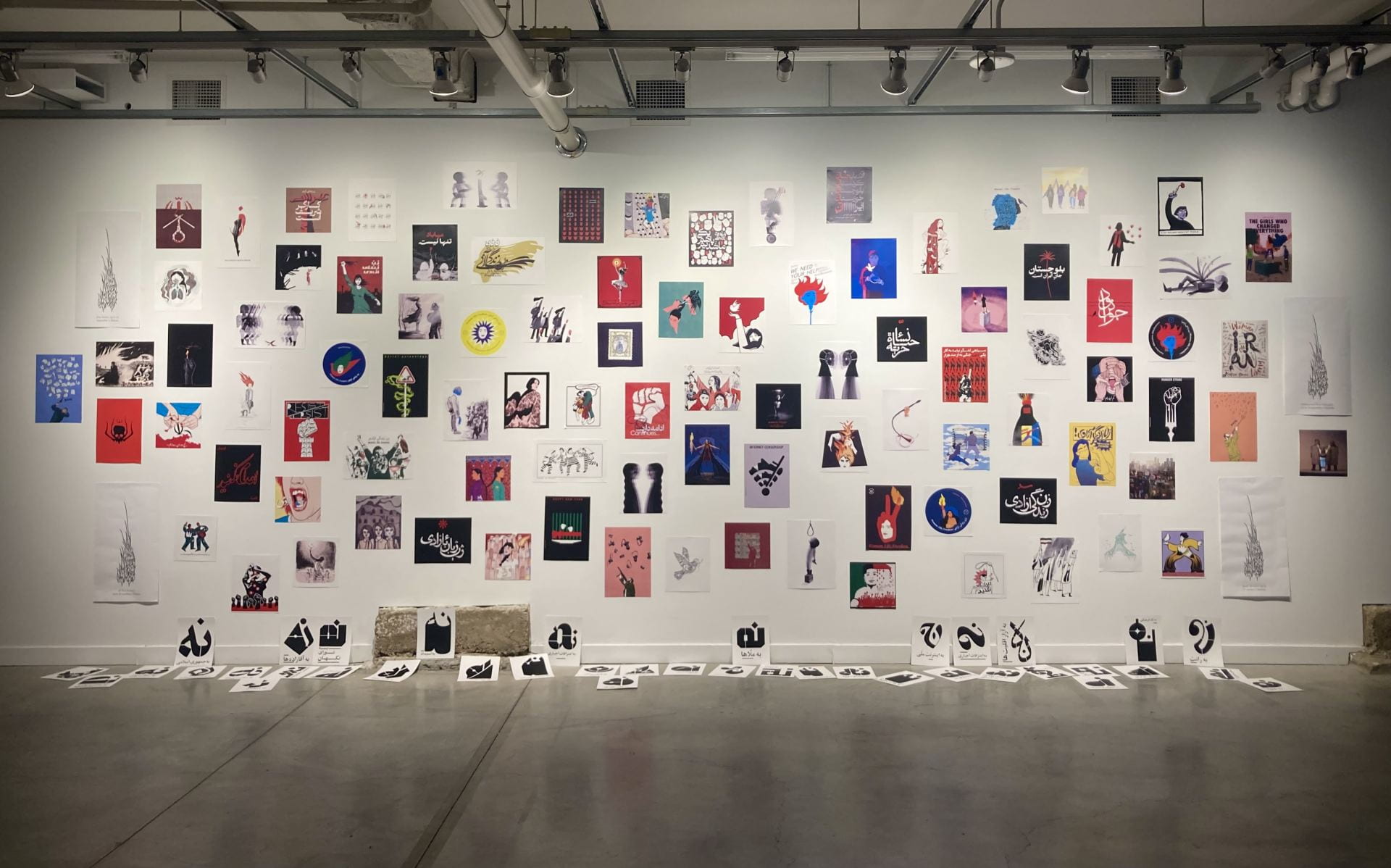
Posters designed by roughly 40 artists adorn a wall as part of the “Iran: Deciphering Violence and Resistance” exhibit, which is on show at the Urban Arts Space at the time of publication. Credit: Courtesy of Illya Mousavijad
An ongoing art exhibit is bringing awareness to the struggles of Iranian women who have been victims of patriarchal oppression for decades.
Ohio State’s Urban Arts Space is currently showcasing “Iran: Deciphering Violence and Resistance,” which opened Tuesday and will be on view until Nov. 18, according to the Department of Art’s website. Illya Mousavijad, the exhibit’s curator and a participating artist, said he drew inspiration from the pro-justice movement that emerged in Iran following the arrest and subsequent death of a woman named Mahsa “Jina” Amini in September 2022.
“[Amini] was essentially beaten to death by the police because of her allegiance with improper hijab clothing,” Mousavijad said.
Mousavijad said curating the exhibit was his way of honoring Amini and supporting the movement at large.
“As someone who grew up and was born and grew there, I’m looking at the news, I’m watching, I’m looking at my friends and there is monstrous violence,” Mousavijad said. “I didn’t know what to do, to be honest, and I thought to myself, ‘I have to do something within my capacity.’”
Mousavijad said the interdisciplinary exhibit features 10 artists and uses various mediums like film, photography, paintings, poetry, animation, music and monuments to express collective trauma.
“One of the most important parts of the exhibition is a wall of posters designed by, I think, 40 or 40-plus artists, graphic designers across the globe,” Mousavijad said.
Contributors such as Ohio State’s Office of Academic Affairs, staffers at the Urban Arts Space, interns, friends, family and — of course — the artists helped to make the exhibit possible, Mousavijad said.
“Without [the Office of Academic Affairs’] financial support, this wouldn’t be possible,” Mousavijad said.
Featured artist Roya Amigh — also the recipient of the 2020 Massachusetts Cultural Council Fellowship in Drawing and Printmaking as well as the 2022 Pollock-Krasner Foundation Grant — said in an email she aims to employ a feminist lens to raise questions regarding women’s social history and identity through her art.
“In my work, I use fragmentation to encourage viewers to reflect on the body and its most intimate parts, inviting them to contemplate the sense of fragmentation that women often feel,” Amigh said. “My process involves both dismembering and mending, with sewing serving as a metaphor for the latter.”
Amigh said her work is based on Persian miniature paintings — text illustrations created using gouache paint on paper — which she then modifies by removing the color and altering the figures’ genders.
“I recreated many Persian miniatures along with the images of women’s movement by gluing thread on paper,” Amigh said. “After creating these drawings, I assemble them in fragmented pieces, stitched to each other by a thread to build up the work.”
Mousavijad said the abolition of women’s rights in Iran is heavily connected to the suppression of rights in America.
“This involves every single human being. This is something that affects young girls into their teenage years, into high school, into college,” Mousavijad said. “[Students] are facing just about as [many] dilemmas and systematic violence against their rights, and they will continue to face these issues as they grow up.”
An opening reception for “Iran: Deciphering Violence and Resistance” will be held from 5-8 p.m., Oct. 6 at the Urban Arts Space. Additional details about the event are available on the art gallery’s website.
More information about Mousavijad’s projects can be found on his website.


